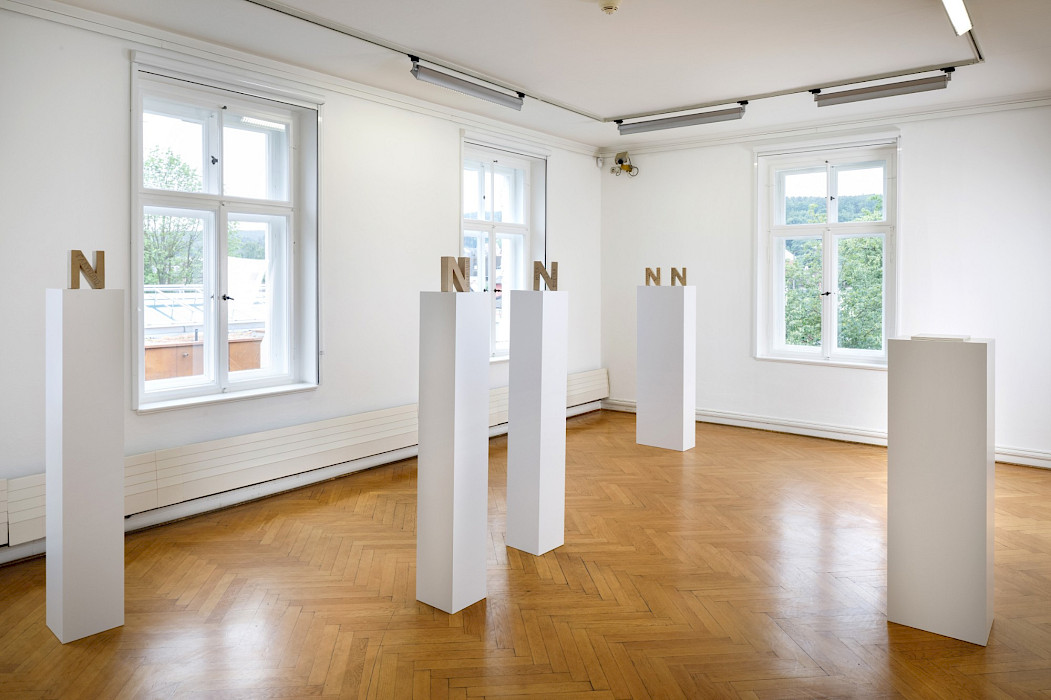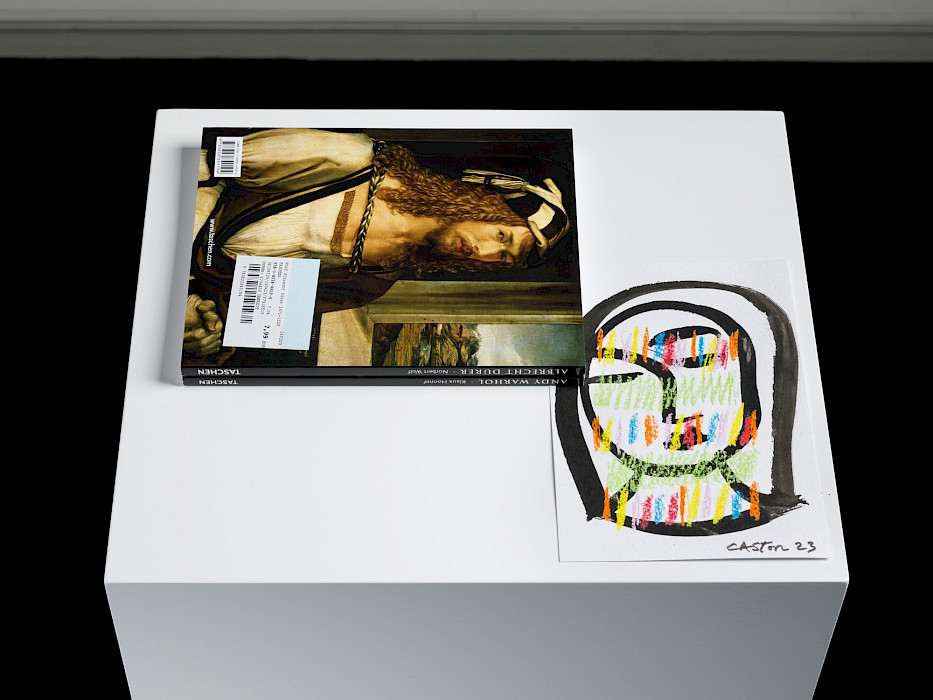André Butzer
Following his first institutional solo exhibition in Bavaria (Bayerisches Armeemuseum Ingolstadt, 2016), the Oberpfälzer Künstlerhaus presents the German painter André Butzer with a very special show. Here, for the first time, the artist completely abandons the use of walls as hanging surfaces for his paintings – as well as the paintings themselves.
Since the late 1990s, Andre Butzer and the "Science Fiction Expressionism" that was invented by him, have had a major impact onthe international painting discourse. His works deal with the extremes of history and the brokenness of human existence as such, locating the individual in a perpetual state between striving for fulfillment and failing. The very name of the cosmic place "NASAHEIM", which Butzer imagined in 2001, creates tension between opposing poles since "NASA", the first part of this neologism, refers to something extremely distant, technological, while "HEIM" (German for “home”) connotes closeness, warmth, and humaneness." (Christian Malycha in: Sein und Bild. André Butzer 1994-2014. Bielefeld, Berlin 2017, p. 138).
A large N made from copper is the centerpiece of André Butzer's exhibition at the Kebbel-Villa. On its front, the artist has written the word WIEDERGEBURT (= “rebirth”) with lacquer: On its back, in Greek script: EINAI GAR KAI ENTAUTHA THEOUS (= "here, too, gods are present"). Heraclitus is said to have uttered this word (= statement) to strangers who observed him suspiciously as he warmed himself at the stove. It refers to the fact that even things that may seem insignificant at first glance can hold meaning and greatness.
Around the large copper N, books about artists and art are presented on pedestals. But these books are not meant to be read. Rather, with their inscriptions and due to the way they are presented, they serve as references within the cosmos of art.
The central theme of André Butzer's exhibition at the Kebbel-Villa is his intellectual frame of reference. The spectrum that is revealed on the ground floor is further developed on the first floor.
The exhibition at the Kebbel Villa is taking place on occasion of André Butzer's 50th birthday. It is the counterpart to his major retrospective at the Museo Thyssen-Bornemisza in Madrid, which is taking place at the same time. It reveals the intellectual and philosophical cosmos from which the large, colorful paintings shown in Spain originate.
André Butzer was born in Stuttgart in 1973 and lives in Berlin-Wannsee.
Solo exhibitions of his work have been shown at international institutions, including the Museo Thyssen-Bornemisza, Madrid, the Miettinen Collection, Berlin, and the Kunstverein Friedrichshafen (all in 2023); the Friedrichs Foundation, Weidingen (2022); the YUZ Museum, Shanghai, and Museum of the Light, Hokuto (both in 2020); the IKOB Musée d'Art Contemporain, Eupen (2018); the Växjö Konsthall, Växjö (2017); the Bayerische Armeemuseum, Ingolstadt and the Neue Galerie Gladbeck (both 2016); the Kunstverein Reutlingen (2015); the Künstlerhaus - Halle für Kunst und Medien, Graz (2014); the Kestner Gesellschaft, Hannover, and the Kunsthistorisches Museum / Theseustempel, Vienna (both 2011); the Kunsthalle Nürnberg (2009); the Kunstverein Ulm (2005) and the Kunstverein Heilbronn (2004).
Works by André Butzer are in the collections of major museums, including the Aurora Museum, Shanghai; the Art Institute of Chicago; the Carré d'Art, Nîmes; the Children's Museum of the Arts, New York; the Deichtorhallen Hamburg; the University of Washington, Seattle; the Friedrichs Foundation, Weidingen / Bonn; the Hall Art Foundation, Reading / VT | Derneburg; the Hölderlinturm Tübingen; the IKOB Musée d'Art Contemporain, Eupen; the Kupferstichkabinett, Berlin; the LACMA Los Angeles County Museum of Art, Los Angeles; the Marciano Art Collection, Los Angeles; the MARe Museum, Bucharest; the MOCA Museum of Contemporary Art, Los Angeles; the Museo Nacional Thyssen-Bornemisza, Madrid; the Museo Novecento, Florence; the Nationalgalerie / Hamburger Bahnhof - Museum für Gegenwart, Berlin; the Paula Modersohn-Becker Museum, Bremen; the Pinakothek der Moderne, Munich; the Rubell Museum, Miami; the Federal Collection of Contemporary Art, Bonn; and the YUZ Museum, Shanghai.
![Untitled (WIEDERGEBURT / EINAI GAR KAI ENTAUTHA THEOUS), [Reincarnation / here, too, gods are present], 2023, Copper, laquer 122,5 x 98 x 38 cm ©Clemens Mayer](/site/assets/files/2041/butzer-ok-2023_002.0x700.jpg)

![Untitled (WIEDERGEBURT / EINAI GAR KAI ENTAUTHA THEOUS), [Reincarnation / here, too, gods are present], 2023, Copper, laquer 122,5 x 98 x 38 cm](/site/assets/files/2041/andre_butzer-0852.0x700.jpg)




![Untitled (TO GAR AUTO NOEIN ESTIN TE KAI EINAI), [because the same is thinking and being], 2022, Cardboard, graphite 17.5 x 14 x 5.5 cm each](/site/assets/files/2041/img_2806.0x700.jpg)
![Untitled (PHYSIS KRYPTESTHAI PHILEI), [the essence of things likes to hide], 2022, Cardboard, graphite 17.5 x 14 x 5.5 cm](/site/assets/files/2041/img_2912.0x700.jpg)

